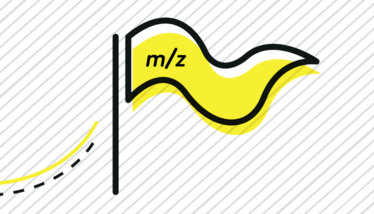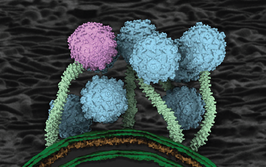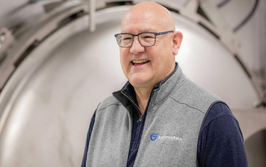Focus on Quality – and the Rest Will Follow
Amgen developed the Multi-Attribute Method (MAM) to obtain high-fidelity understanding of the quality of its own biologics – which is raising the bar across the biopharmaceutical industry
sponsored by Thermo Fisher Scientific

Amgen has always had one overriding goal: to serve patients. With an emphasis on diversity, collaboration and, above all, quality, the company aims for continuous improvement in every sector of the business (see “Building a Culture of Innovation.”). “In fact, quality was the foremost driver behind the development of multi-attribute method (MAM),” says Amgen’s Scientific Director, Da Ren. “We wanted to develop a holistic control tool applicable along the entire bioprocess, including release and stability testing.”
Using a whole set of conventional characterization and control methods, which often assess each attribute with a different assay, did not fit the bill. Enter high resolution accurate mass spectrometry (HRAM-MS) and its potential to directly identify and quantify relevant attributes in a single assay. “The old view was that ‘the process is the product’ – but we turned that on its head by defining the product by its critical quality attributes (CQAs) and their associated desired levels, which is the “blueprint” for designing the processes to manufacture the most safe and efficacious product. In other words, we start with the final desired product in mind, and the process design follows,” says Jette Wypych, Executive Director of Attribute Sciences. MAM is an ideal analytical tool to enable this approach, as MAM has the capability of measuring a large number of post translational modifications in the product at the molecular level.
Building a Culture of Innovation
How is it that some companies always seem to be at the leading edge of technology development? Amgen attributes its success to a consistent, sustained approach: employ talented individuals, place them in a supportive corporate culture, and encourage them to focus on quality. The evolution of MAM from concept to QC tool is a testament to what this philosophy can achieve.
Ren notes that employee diversity also plays a key role. “People of different backgrounds approach the same problem in different ways – and this inspires innovation.” Wypych agrees and notes how Amgen’s culture gives anyone – from any background – the opportunity to grow and blossom.
A second ingredient in the Amgen recipe for success is teamwork. This, says Ren, was fundamental in solving the complex challenges involved in MAM development. “We have a lot of highly talented people – but they are also team players and adept at cross-functional collaboration.” The open, supportive culture contributes to the collaborative environment within Amgen, says Ren. “Everybody helps each other and, in the end, the best ideas prevail!”
Ren also pays tribute to external collaborators. “When combining different components in a brand-new system, vendor support is critical.” Working closely was essential to ensure acceptable and usable technology outcomes, says Wypych. “We had to develop technical QC solutions that would also be acceptable to regulators. Putting MAM into the cGMP environment raised issues regarding robustness, functionality, consumables and software requirements – addressing them required close collaboration with the vendor. And that’s why choosing a vendor with a long-term view is important – biomanufacturers want to avoid the need to change instrumentation every few years.”
Challenges and rewards
The original concept of MAM was conceived by Izydor Apostol at Amgen in 2010. Richard S. Rogers (then member of the Amgen MAM team) and other colleagues went on to demonstrate the potential of MAM and published Amgen’s work in a scientific paper in 2015 (1). Though MAM showed clear scientific and technical promise, the challenge of driving the project from concept to an accepted QC release tool in a GMP setting still lay ahead; channeling the significant power of HRAM-MS into a method capable of robustly, accurately, and routinely measuring CQAs relevant to safety and efficacy in a cGMP environment. This process was no small task. “The transition required and improved implementation and robustness analysis,” says Ren. Other constraints included the need to control costs (without resorting to inadequate instruments) and minimize footprint (so that multiple instruments could fit in a single QC lab).
Solving these problems, says Ren, required collaboration across multiple teams and departments – and the need to work closely with instrument manufacturers. But the results have been extraordinarily gratifying. “In addition to quantitation of predefined CQAs, MAM’s new peak detection capability is outstanding,” says Ren. “It is capable of detecting any new peak (a potential impurity that is not predefined) in the sample against a reference standard. The high resolution and accurate mass features allow it to detect co-eluting peaks with very small mass shifts, such as those associated with deamidation, which conventional methods and low-resolution instruments simply cannot identify.”
Another issue faced by the team involved data processing and presentation – the volume of information generated by MAM was incompatible with a visual output. Again, the cross-functional, team-based approach triumphed: today’s MAM uses a bespoke computational algorithm that evaluates observed masses frame by frame, assigns them to the previously identified attributes, and alerts users to above-threshold new peaks.
However, the team was well aware that intelligent solutions are of little use if operators cannot apply them in a high-throughput environment. “The technology had to be used by QC specialists, not mass spec specialists,” says Wypych. “And that meant robust methods and user-friendly software were essential.”
It often takes a lot of effort to make something feel easy, comments Ting Song, Senior Scientist at Amgen, but the team was committed and motivated. The resulting user-friendly and automated system was able to rapidly process large volumes of data into actionable information. “The best part,” says Song, “is hearing my QC colleagues saying how easy it is to use!”
For Wypych, one of the most rewarding moments was seeing MAM fulfil the requirements for a release and stability tool; namely, user-friendly, accurate, quantifiable CQA monitoring and new peak detection. “At that point, I knew we had a scientifically defensible method that we could apply and implement in release and stability testing and share with regulators.”
MAM 101
MAM is an attribute-specific LC-MS-based peptide mapping method that is composed of three parts: (i) sample preparation, which normally includes protein denaturation, reduction, alkylation, and enzymatic digestion; (ii) separation of digested peptide mixture using a reversed-phase LC and detection of separated peptides using a high resolution, high mass accuracy mass spectrometer; and (iii) quantitative data analysis of targeted product attributes and detection of nontargeted new peaks (3).
Features
- High specificity, high resolution (direct identification and quantification of molecular-level attributes removes ambiguity)
- Powerful (quantifies a large number of attributes in a single assay)
- New peak detection (identifies material not present in reference sample; distinguishes masses that may co-elute in conventional methods, or be missed due to inadequate sensitivity)
- Flexible (new CQAs can be added to the monitored analyte list without changing the fundamental analytical method)
Implications
- Replacement of conventional “one assay per attribute” quality control methods
- Transition from profile-based assays to attribute-focused MAM aligns with QbD paradigm
- Reduce costs and saves time
- Provide manufacturers and regulators with unparalleled confidence in biologics quality
Perfect timing, perfect fit
MAM is becoming increasingly accepted as a better testing strategy within the industry; several biopharmaceutical companies have been evaluating it in QC, and others are planning to do so. The trend is reflected in the growth of the MAM Consortium (www.mamconsortium.org), a network co-led by Rich Rogers and Ren. The Consortium – which has over 300 members, including pharmaceutical companies, regulatory agencies, CDMOs, and instrument/software vendors – meets monthly to discuss MAM and related mass spectrometry technologies.
“At first, many people in the industry questioned the utility of MAM for the QC environment,” says Ren. “But now people don’t ask why they should use MAM; instead, they ask how to implement the technology.”
The credibility of MAM has been further enhanced, says Wypych, by technical publications from regulatory agencies (2), who have acknowledged the importance of MAM’s ability to detect new peaks – and thus unexpected product degradants or impurities.
MAM also fits perfectly with ICH Quality by Design (QbD) guidelines. “The ability to characterize and quantitatively measure CQAs and guide process development to obtain target levels of CQAs is essential for QbD in biologics,” says Wypych. An added benefit for sponsors and regulators alike was MAM’s flexibility. If it becomes necessary to monitor additional CQAs for a given product, MAM can easily accommodate the change. Companies that rely on conventional methods, by contrast, would need to add a new assay to the release specifications. “Industry and many regulatory bodies now accept that MAM can measure an almost unlimited number of specific CQAs related to post-translational modifications at the molecular level, which are deemed relevant to safety and efficacy,” says Wypych.
By exploiting the known advantages of HRAM-MS, Amgen has changed the QC testing toolkit forever. “Now, we can monitor CQAs in an end-to-end approach,” says Ren. “We identify CQAs during characterization and then – following QbD principles – monitor and control them from development to release.” And this – just as Amgen always intended – is bringing about the desired improvements to product quality.
- RS Rogers et al, “Development of a quantitative mass spectrometry multi-attribute method for characterization, quality control testing and disposition of biologics,” MAbs, 7, 881 (2015). PMID: 26186204
- S Rogstad et al, “Multi-attribute method for quality control of therapeutic proteins,” Anal Chem, 91, 14170 (2019). PMID: 31618017
- D Ren, “Advancing mass spectrometry technology in cGMP environments,” Trends Biotechnol (2020), In Press



















